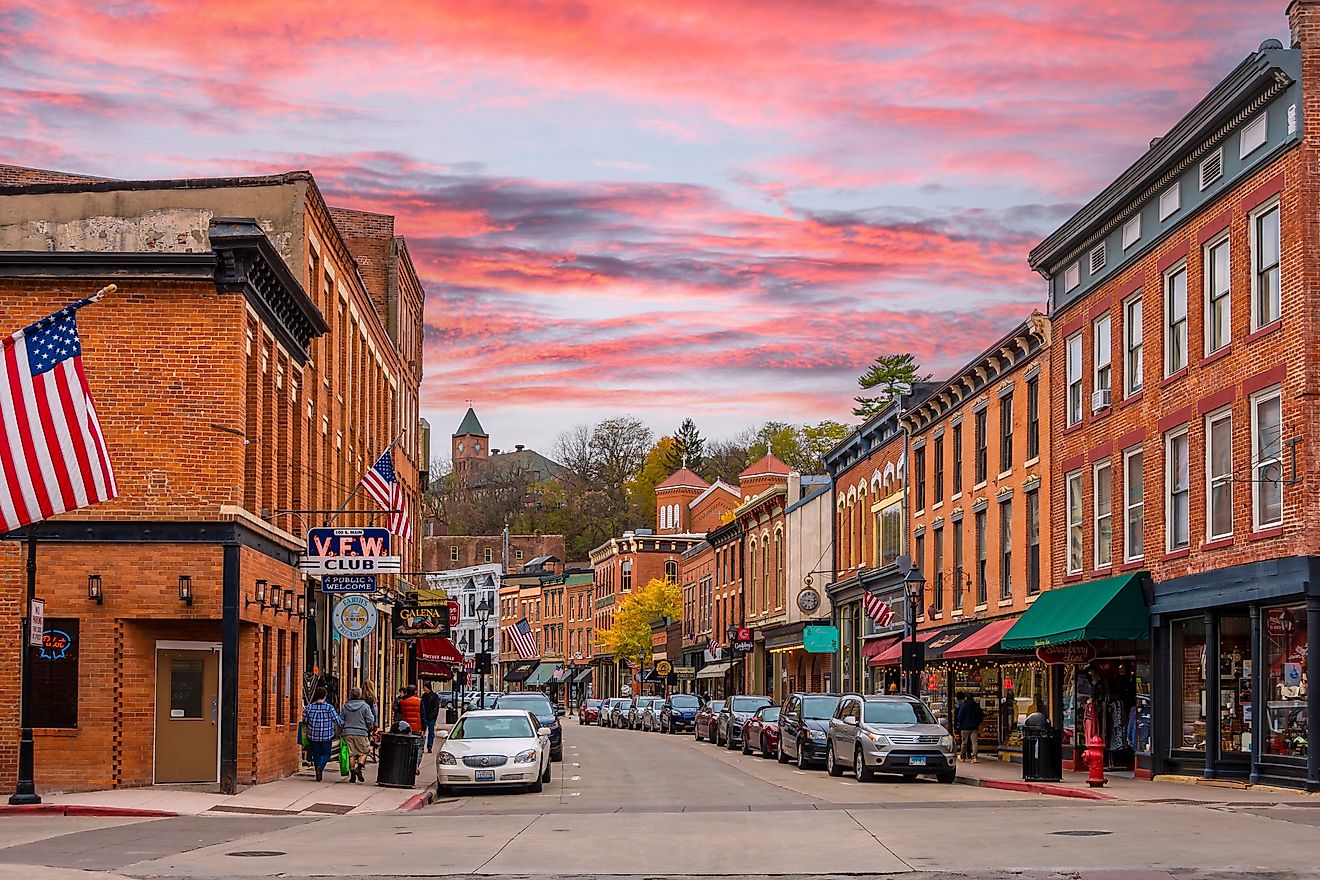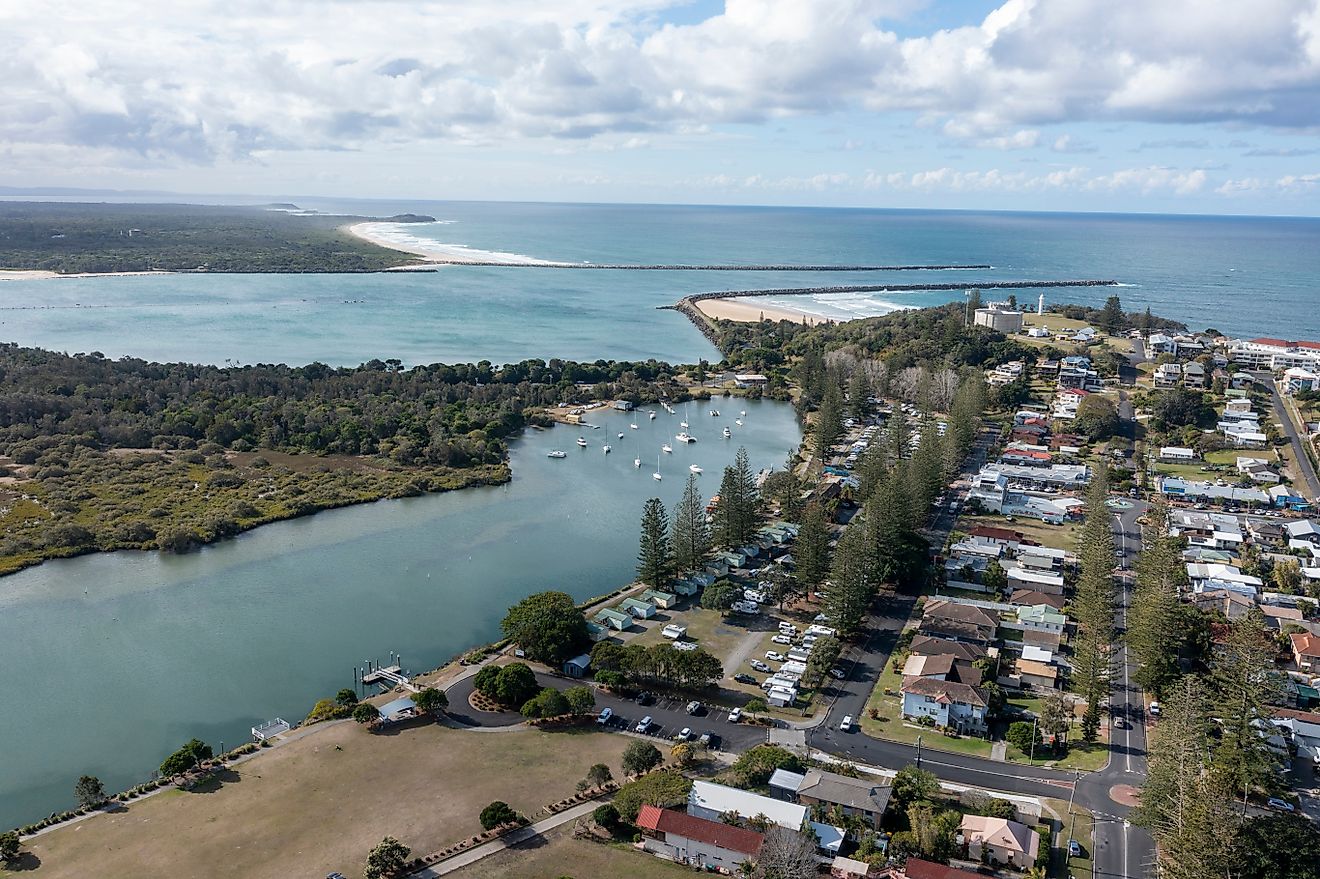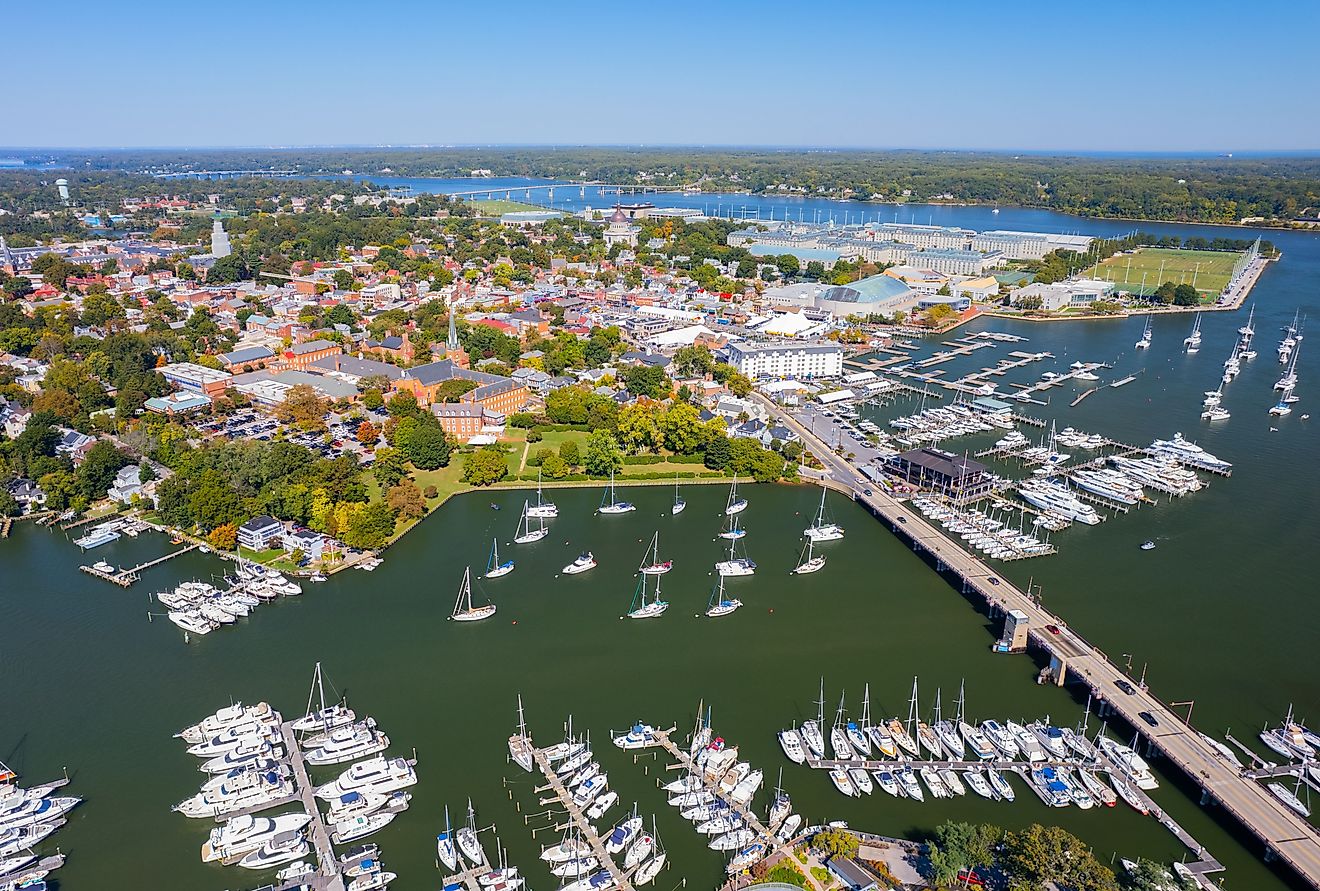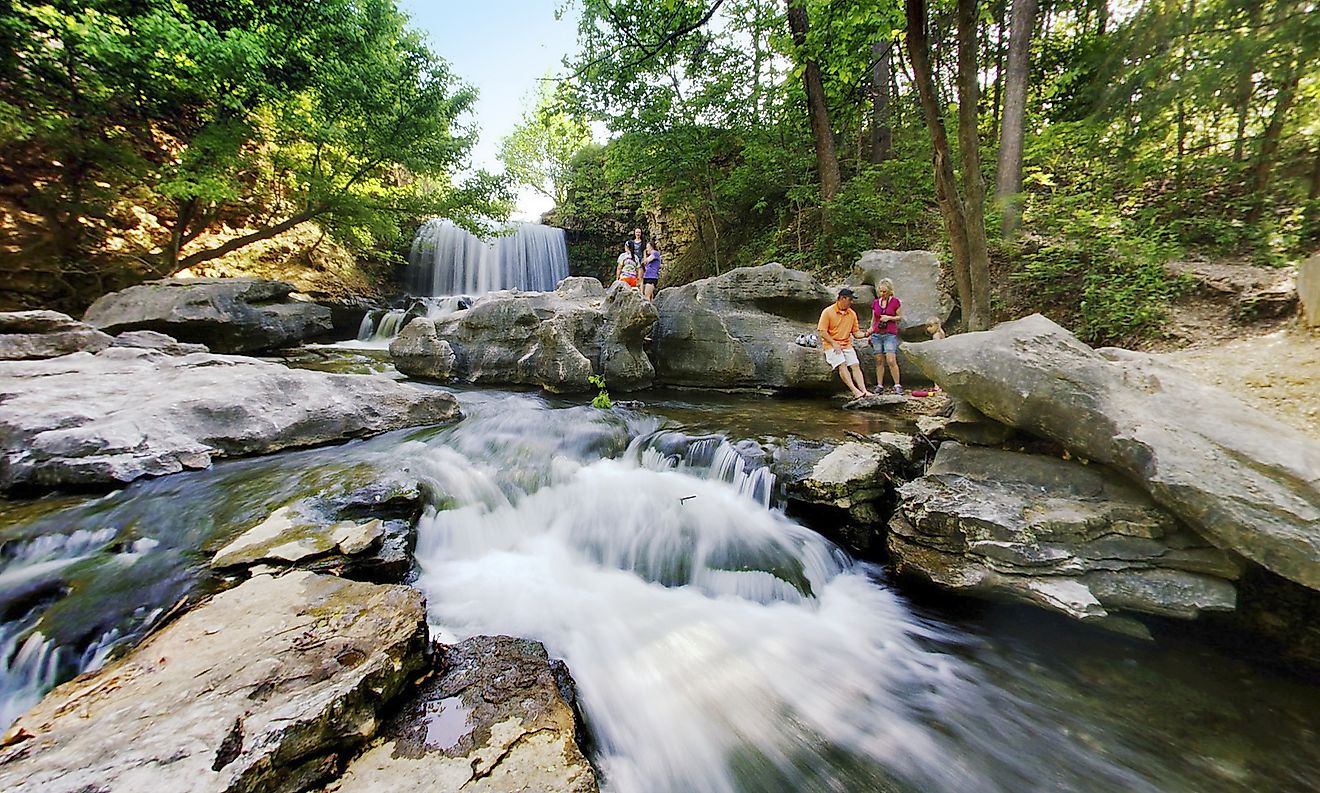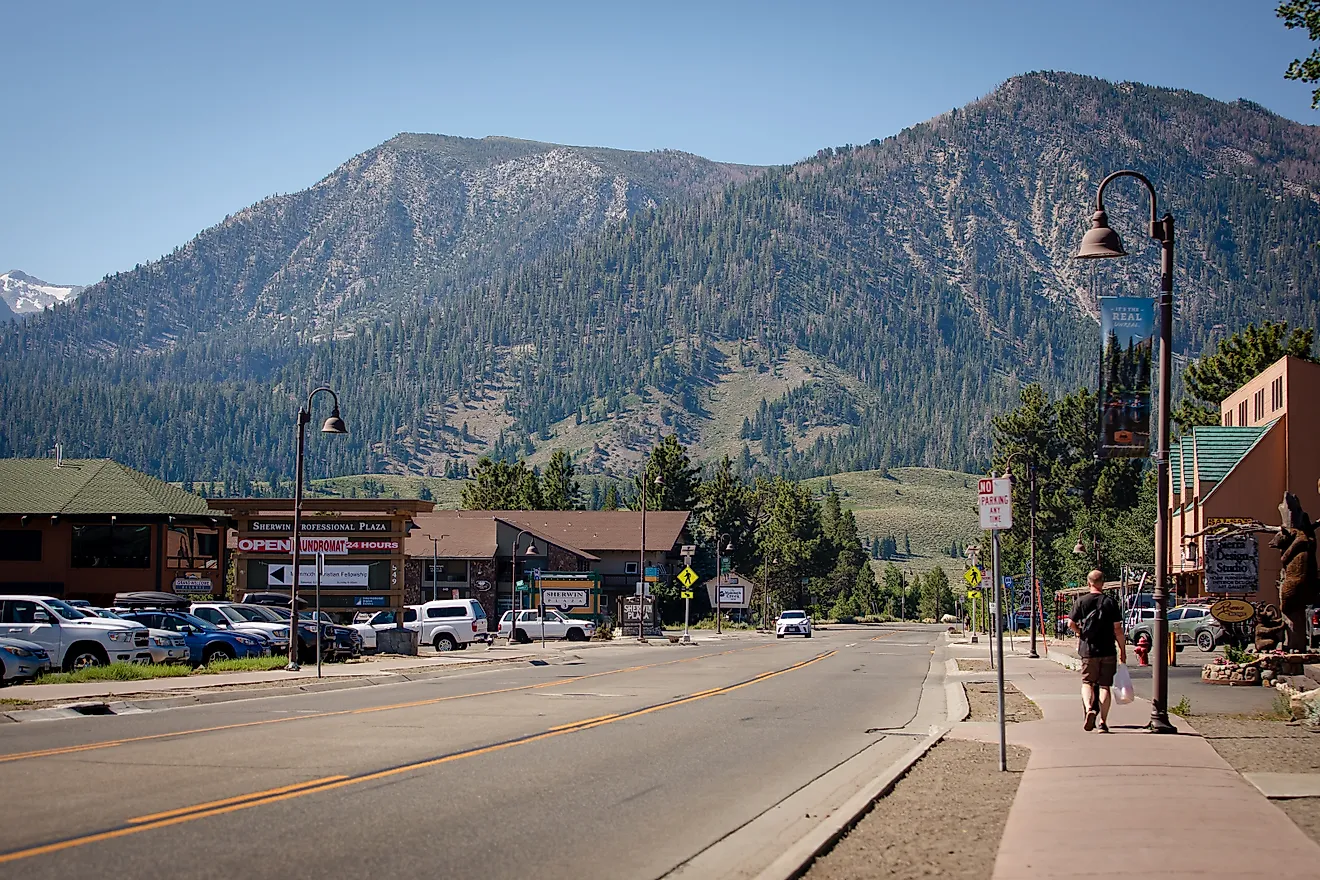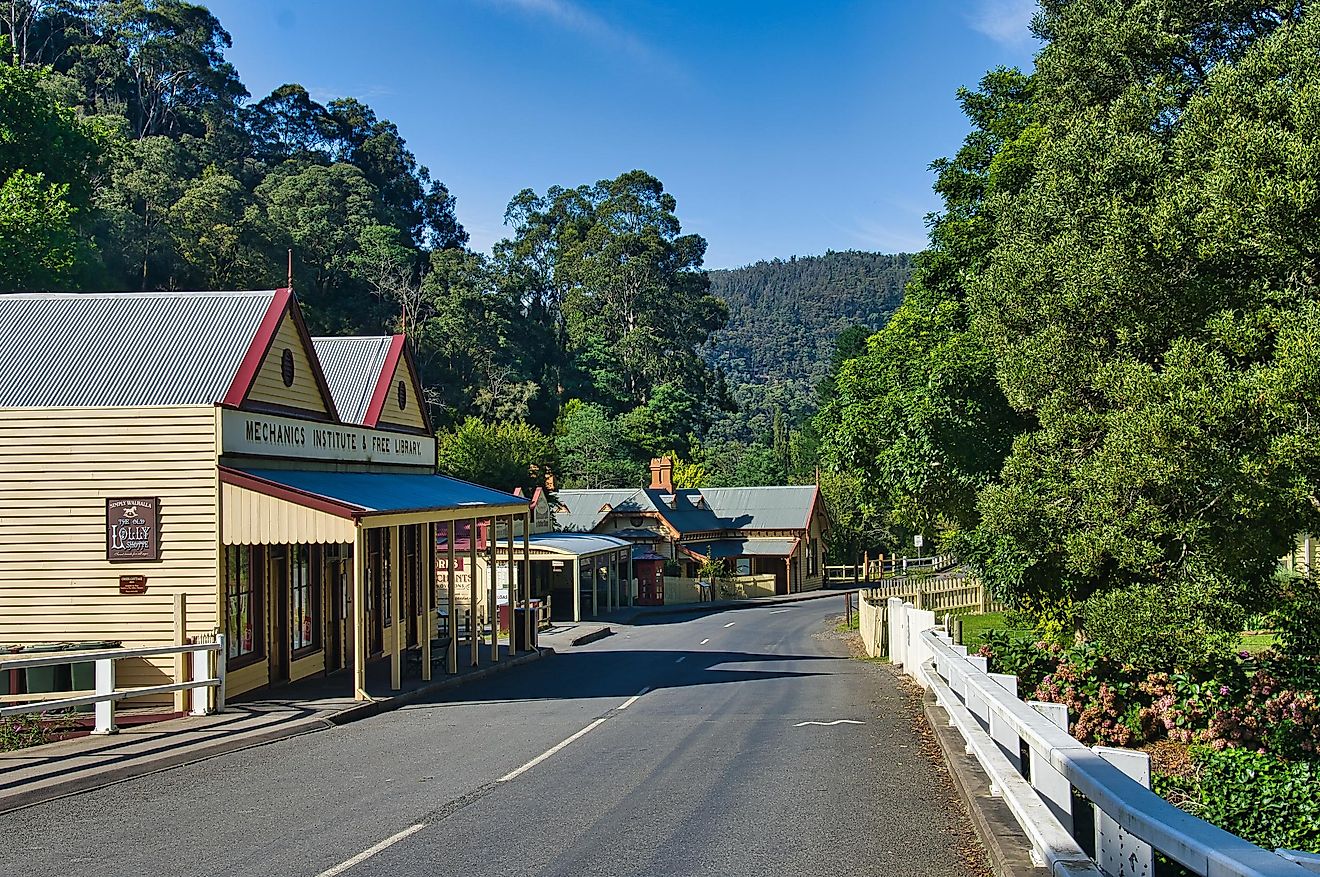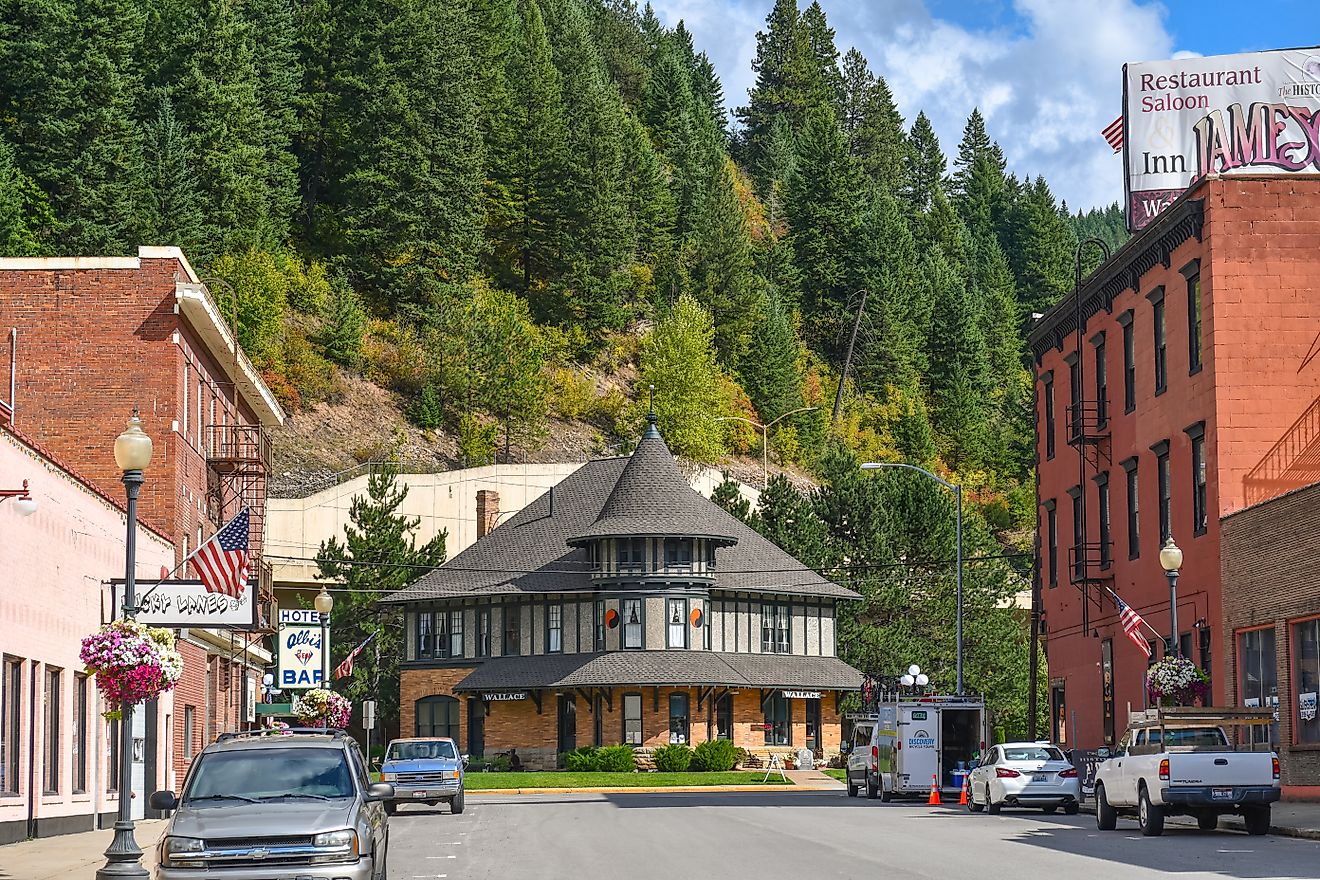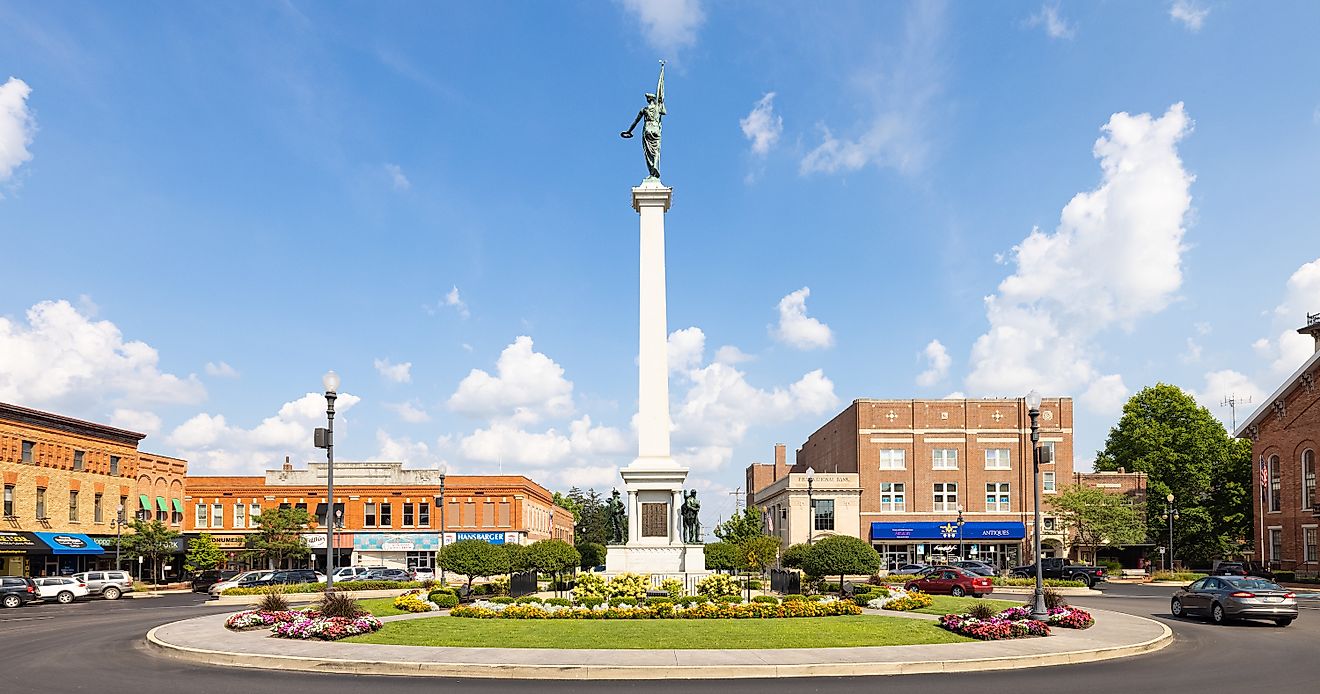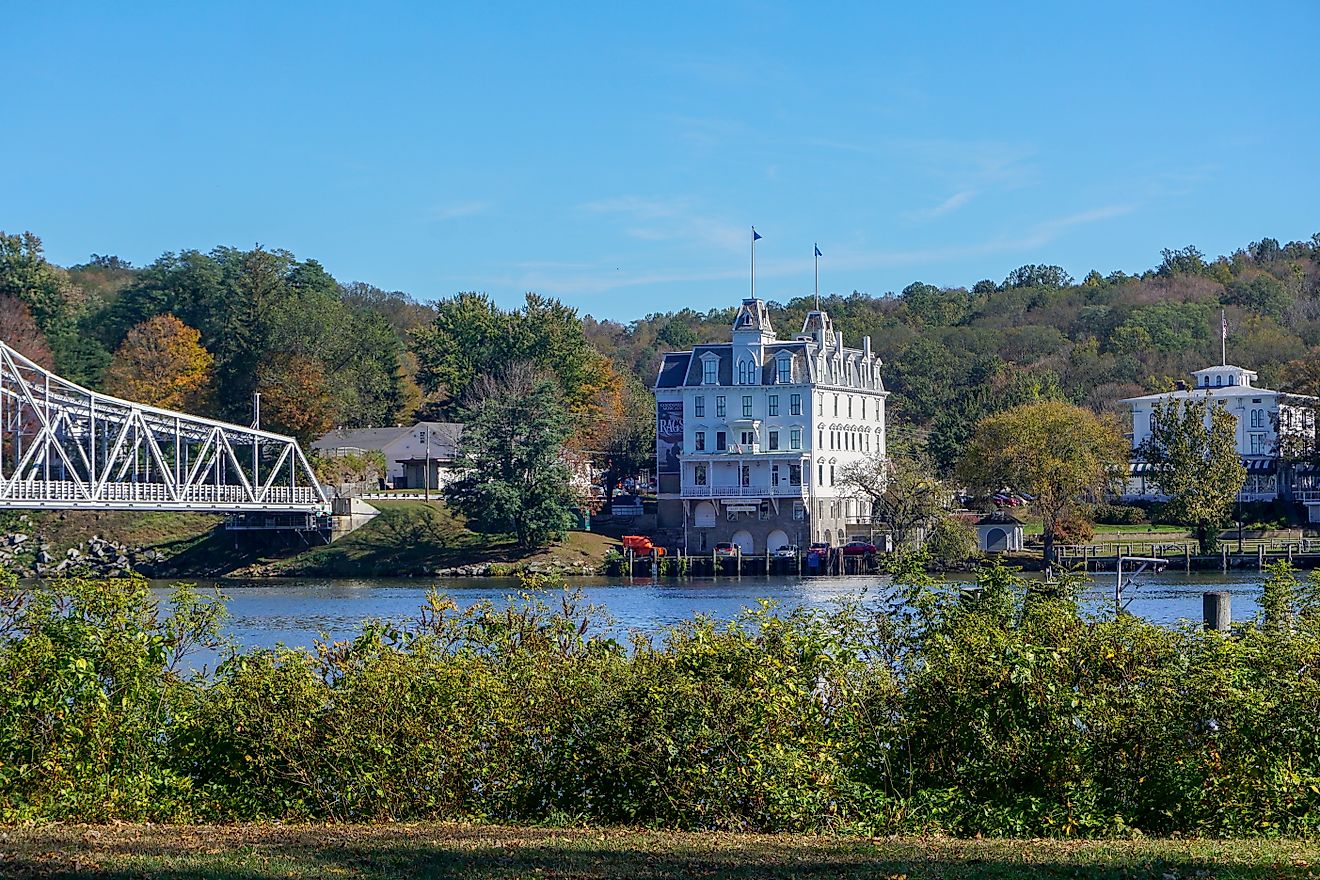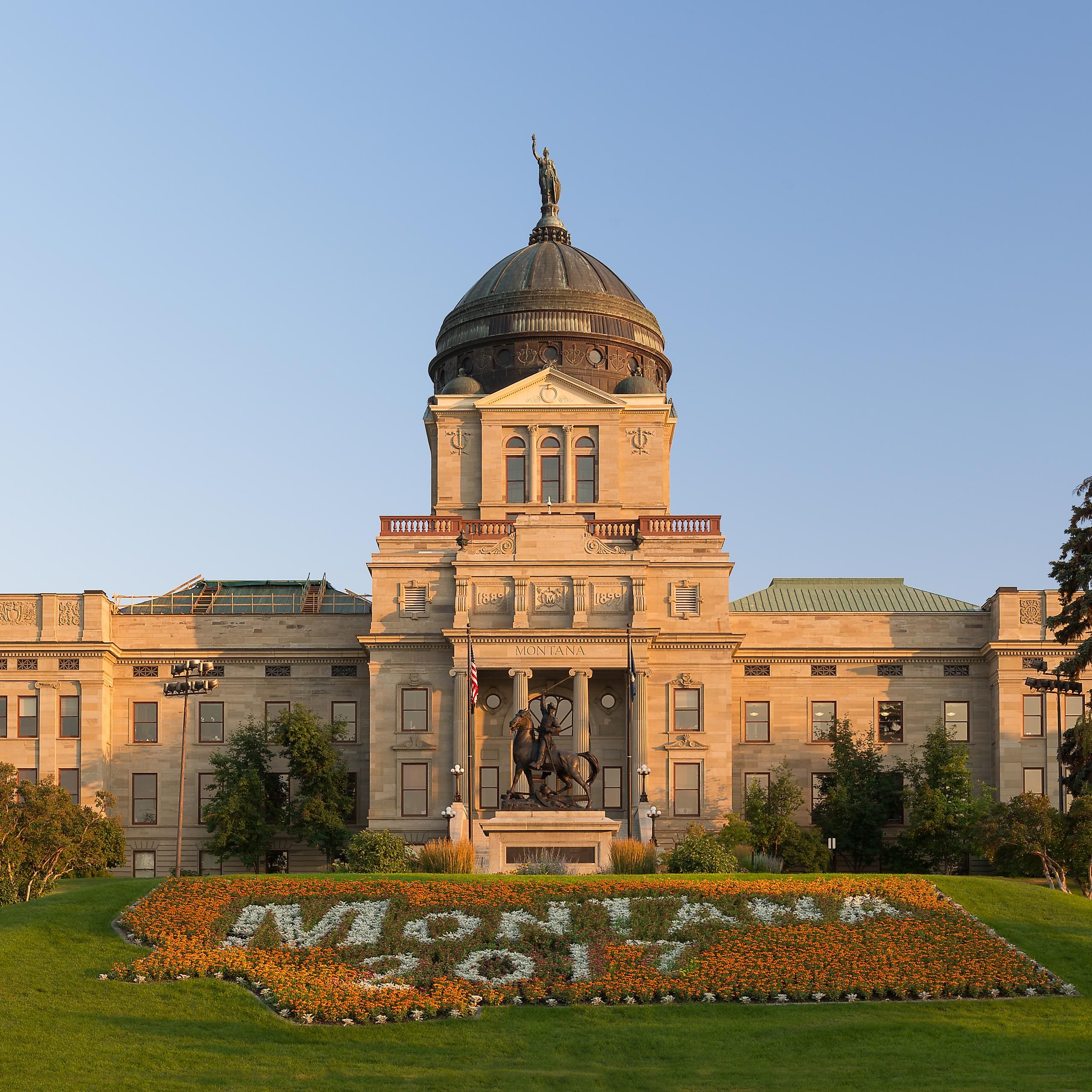
These 7 Montana Towns Have The Best Historic Districts
Montana’s small towns are full of history you can see and touch. Their historic districts are built from the same brick, timber, and stone that served gold miners, railroad workers, and homesteaders more than a century ago. These neighborhoods tell the stories of how Montana grew, and they’ve been carefully preserved by the communities that still live there.
The towns on this list all have fewer than 50,000 residents, but each one offers a distinct experience. Some have colorful storefronts and grand courthouses, while others feature mission churches or riverfront trading posts. They’re walkable, welcoming, and surrounded by beautiful landscapes that add to the experience. Whether you’re a history lover, a photographer, or just someone who enjoys wandering through character-rich places, these districts are worth the visit.
Butte

Butte is a town built by copper, labor, and grit, and the past is never far from view. The Butte-Anaconda Historic District is one of the largest of its kind in the country, covering a huge swath of Uptown with more than 6,000 historic structures. Old mine headframes still dot the skyline, and you’ll find everything from Victorian mansions to Art Deco office buildings, all tightly packed along steep, walkable streets. For an overview, start with a narrated ride on the Butte Trolley, which winds past iconic landmarks while offering insight into Butte’s early days as a rough-and-tumble mining town.
To go even deeper, literally, head to the World Museum of Mining, where you can walk through a recreated 1890s mining town and descend into an actual underground shaft. You’ll get a visceral sense of the conditions miners endured. Just up the hill, the Copper King Mansion gives you the other side of that story, showcasing the wealth and elegance of Butte’s early elite. After exploring, be sure to stop by Headframe Spirits, the town’s very first legal distillery that is set in a renovated historic building in uptown Butte.
Helena
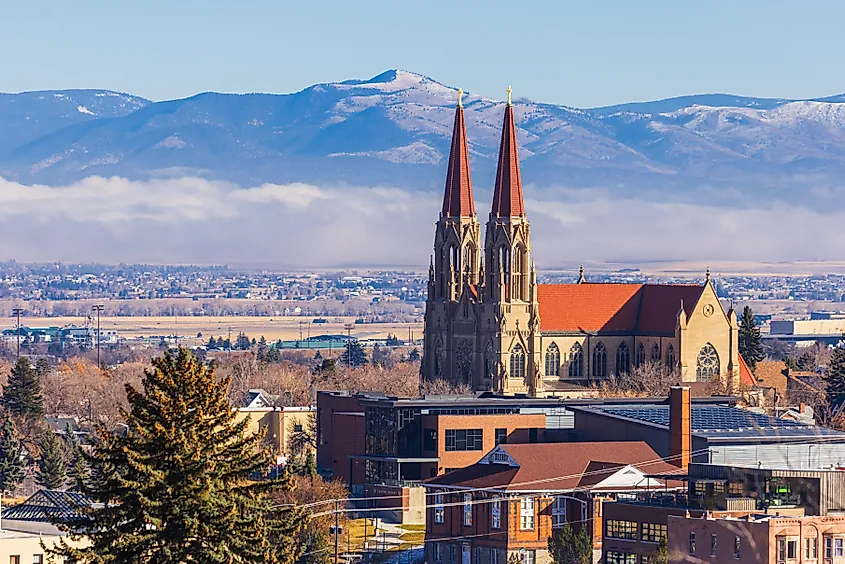
Helena’s history starts with a gold strike, and the evidence is still right there under your feet. The city’s Historic District centers on Last Chance Gulch, named after the four prospectors who found gold here in 1864. That discovery launched a mining boom, and Helena quickly grew into a wealthy, cosmopolitan capital. The curve of the street still follows the old creek bed, and many of the buildings along it date back to the late 1800s and early 1900s. As you walk, you’ll pass arched stone entryways, ornate cornices, and ghost signs advertising long-vanished saloons and tailors. This part of town is especially inviting on foot, thanks to the Walking Mall, a car-free stretch where cafés, galleries, and shops fill the old storefronts.
A standout feature of the downtown core is the Cathedral of St. Helena, a towering Gothic Revival church inspired by European cathedrals. Its stained glass windows are breathtaking, and the bells can be heard across town. When it’s time for a break, grab a seat at Hub Coffee, housed in a restored building with tall windows and a relaxed, community vibe. If you're staying for dinner, On Broadway is a local favorite offering Italian food and a cozy setting that’s perfect after a day of exploring.
Philipsburg
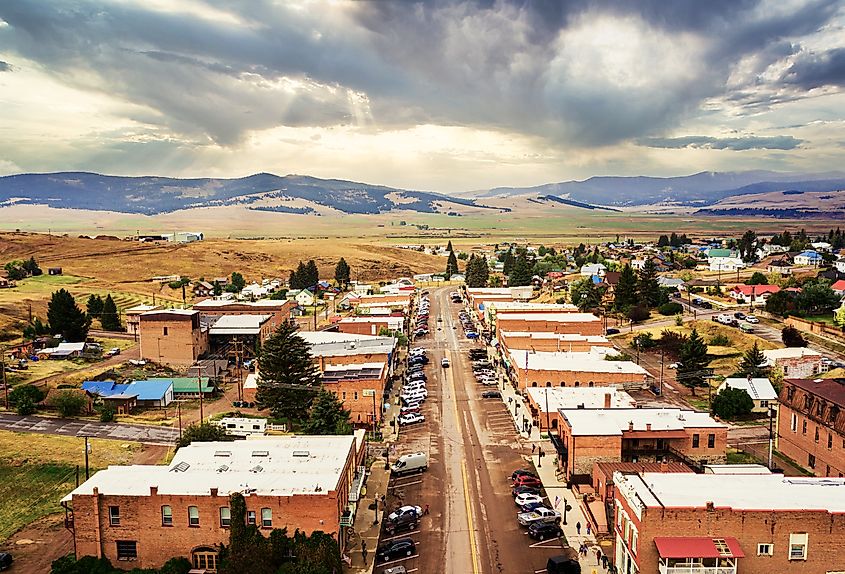
Philipsburg may be small, but its historic core packs in more charm than towns ten times its size. The heart of town is the Broadway Historic District, a stretch of preserved 19th-century buildings that once served silver miners, ranchers, and frontier families. Many of the colorful wooden and brick façades you’ll see today date back to the late 1800s, lovingly restored with period-accurate details. This part of town has a walkable, intimate feel, and you can take it all in with a slow stroll down Broadway. A great place to start is The Sweet Palace, a massive candy shop in a restored heritage storefront, where jars of saltwater taffy and handmade caramels line the walls from floor to ceiling. Right across the street is Philipsburg Brewing Company, housed in the 1888 Sayrs Building, once a bank. Grab a pint of their local Otter Water pale ale and enjoy the mountain views.
To understand how this town grew from a mining camp into a community with real staying power, visit the Granite County Museum. It features a recreated mine shaft, historic exhibits, and a view into what everyday life looked like when the town was booming. You can even try your hand at sapphire mining at Gem Mountain, located about 22 miles west of Philipsburg, typically a 30-minute drive away. It’s a family-friendly activity and a nod to one of Philipsburg’s lesser-known claims to fame: its rich sapphire beds.
Virginia City
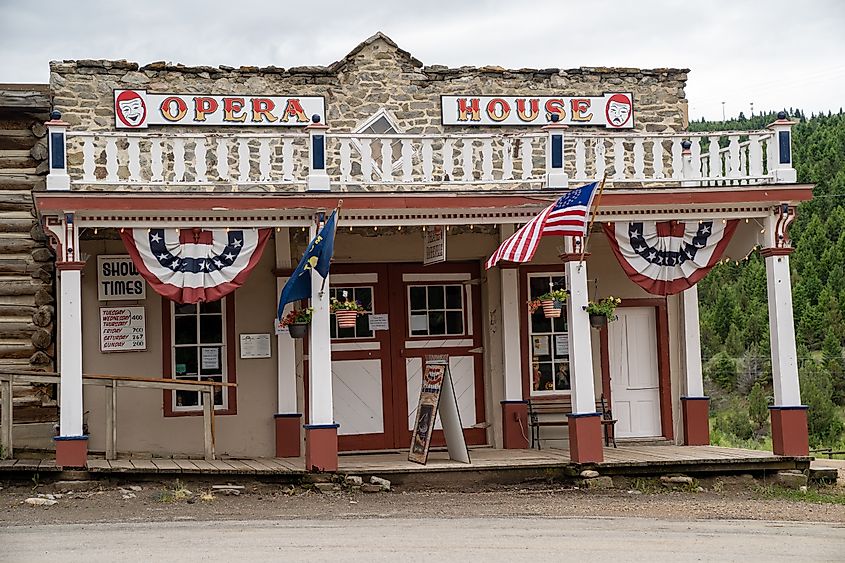
Virginia City brings the Old West to life in ways few towns can match. Founded during the 1863 gold rush, the Virginia City Historic District still stands as one of the country’s best-preserved frontier towns, with authentic wooden boardwalks, original storefronts, and over 200 buildings that date backto the 19th century. Start your visit at the Thompson‑Hickman Museum, housed in a former jail. Inside, you’ll find vintage tools, photographs, and artifacts. Afterward, plan to catch a Vaudeville show at the Virginia City Opera House, home of the local theater troupe, the Virginia City Players.
When you get hungry, head over to Bob’s Place, a historic eatery that sits in one of the town’s original buildings from 1864. After lunch, walk across the street to Rank’s Mercantile, where you can browse Victorian-era clothing including bonnets, hats, and period men's frontier attire. They even have old-fashioned candy tins and a selection of classic books. If you have time, ride the Alder Gulch Shortline Railroad to Nevada City, another ghost‑town‑turned‑open‑air museum. Along the way, a guide will share wild gold rush tales as you pass abandoned dredges and forested ridgelines. Walking through Virginia City today feels like stepping onto a film set, only this one has real ghosts, real history, and plenty of local guides to tell the stories of a time gone by.
Stevensville
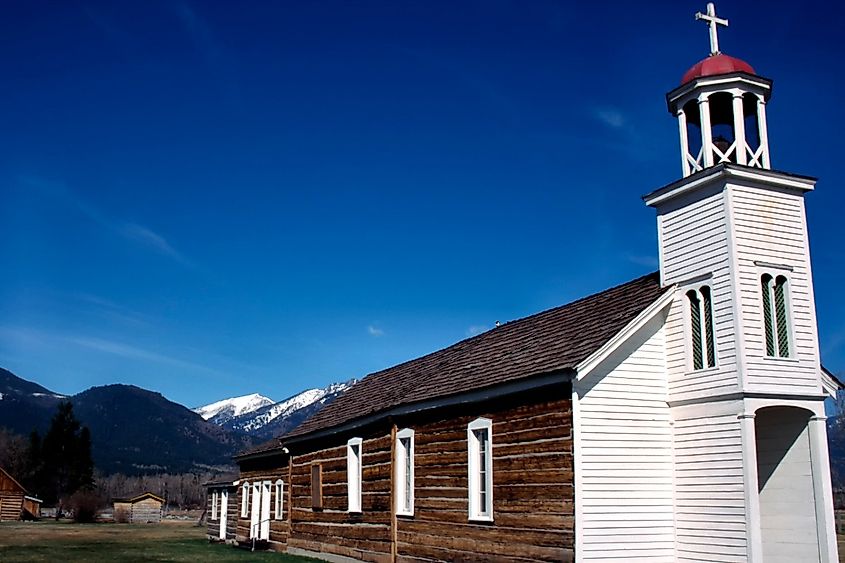
Stevensville may be quiet, but its place in Montana history is anything but small. Founded in 1841 with the establishment of St. Mary’s Mission, this town is considered the first permanent non-Indigenous settlement in the state. The mission grounds still sit at the heart of town, carefully preserved and open to visitors. Touring the Historic St. Mary’s Mission offers a glimpse into early missionary life and early encounters between Jesuits and the Bitterroot Salish people. You’ll walk through original log buildings, including the chapel and living quarters, all set beneath the towering Bitterroot Mountains.
Beyond the mission, downtown Stevensville holds its own charm. The Stevensville Commercial Historic District features a short but sweet stretch of early 20th-century buildings that have been thoughtfully preserved. You’ll find storefronts with transom windows, original signage, and a relaxed pace that invites lingering. Stop in at Trapper Peak Coffee Co, a cozy café in a historic building with excellent coffee, in-house pastries and donuts, and plenty of locals catching up over gourmet sandwiches. For something more substantial, Mission Bistro serves creative seasonal dishes with local ingredients in a warm, brick-walled space on Main Street.
For a deeper look at regional history, head to Fort Owen State Park, located just a few minutes outside of town. The original trading post was once the social and economic center of the Bitterroot Valley, and though only parts of it remain, it’s a peaceful place to walk, read the interpretive signs, and take in the landscape.
Fort Benton
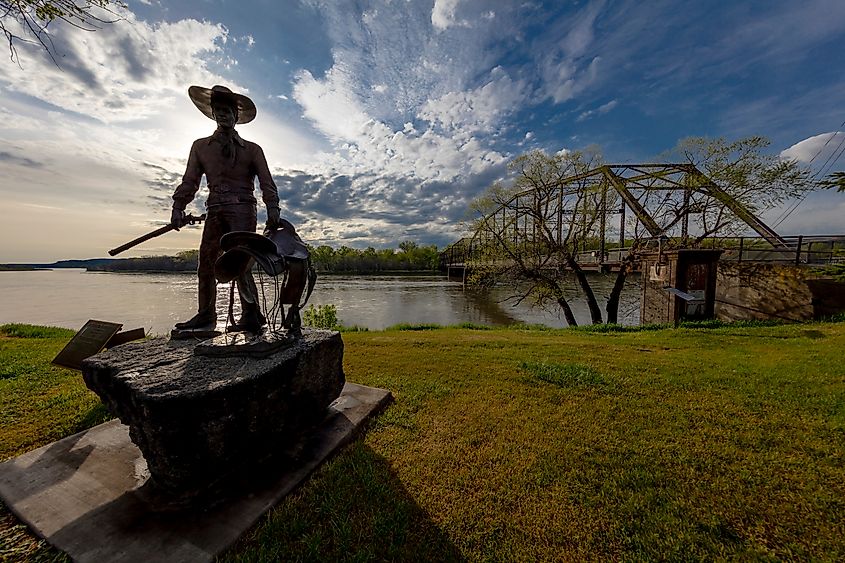
Fort Benton has earned its nickname as “The Birthplace of Montana,” and a walk through its Historic District proves why. Founded in 1846 as a fur trading post along the Missouri River, it quickly grew into a hub for steamboats, traders, and settlers heading west. Today, much of that riverfront legacy has been preserved. The district includes original stone warehouses, trading posts, and homes that line the levee, where steamboats once unloaded goods bound for the frontier. Start your visit at Old Fort Benton, a reconstructed section of the original 19th-century trading post. The site includes barracks, trading rooms, and a blacksmith shop, all brought to life with thoughtful interpretation and period furnishings.
A few steps away, the Museum of the Upper Missouri is packed with stories about the rise of trade along the river. Another standout is the Museum of the Northern Great Plains, which explores agricultural life in the region. If you’re looking for coffee or a quick bite in between museum-hopping, Wake Cup Coffee House is a welcoming spot with good espresso and fresh sandwiches, located right on Front Street with a view of the river.
Livingston
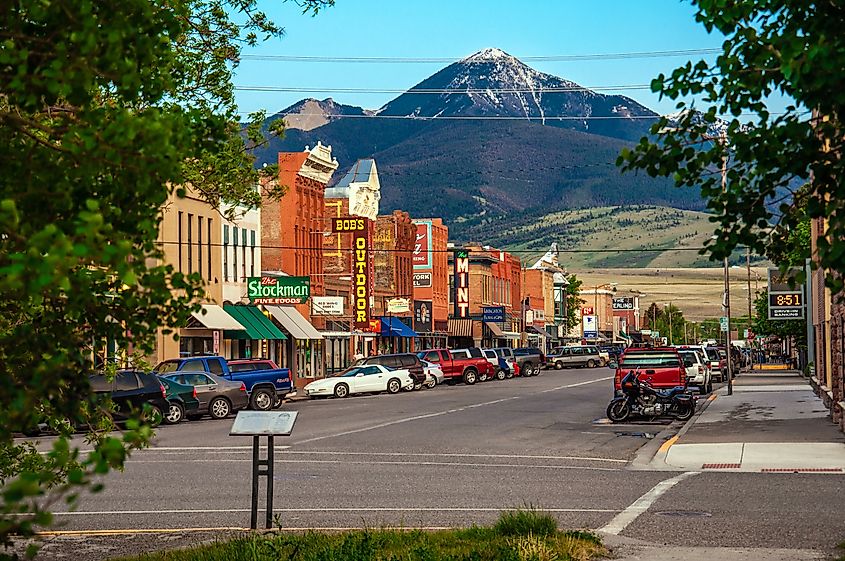
Livingston feels like a storybook Old West town, situated at the mouth of Paradise Valley where the Yellowstone River carves through red-brick storefronts and the Absaroka Mountains tower overhead. Its Commercial Historic District includes dozens of structures built between the 1880s and early 1900s, including train depots, general stores, hotels, and early banks. The Livingston Depot Center still stands as a landmark, now operating as a museum chronicling the area’s railroad history with curated displays and exhibits. Nearby, the Yellowstone Gateway Museum offers a deeper look into local culture, from the railroad and gold rush days to colorful tales about Calamity Jane, who lived here for 20 years.
When you walk along Main Street, you’ll notice wood-frame and brick buildings originally built after an 1886 fire. They include the charming Danforth Block, a former shooting gallery and cigar factory, and the old Grabow Hotel - both sturdy reminders of the town's resilience. For dinner, stop at Campione, a Roman-inspired spot in a repurposed historic building serving fresh pasta and seasonal dishes. Afterward, slide over to the Murray Bar, located in the lobby of the Historic Murray Hotel, for a local Montana pilsner under vintage marquee lights. Beyond food and history, Livingston is an art town. In addiiton to the Danforth Museum of Art, you'll find more than a dozen local fine art galleries downtown, featuring everything from western art to photography to ceramics.
Every town on this list has found a way to keep its history visible. You can see it in the woodwork, the old signage, the carefully restored hotels, and the museums that hold onto local stories. These historic districts aren’t just places to pass through. They’re active parts of the community, filled with shops, restaurants, and neighbors who care about where they live. Visiting them gives you a deeper sense of Montana’s past, but it also gives you a chance to connect with the present. Spend an afternoon on a shaded main street, or step inside a building that’s stood for 140 years. You’ll come away with more than facts. You’ll come away with a feel for what built this state.
